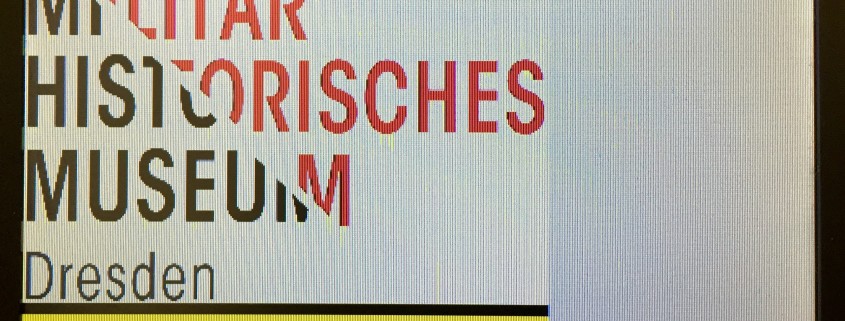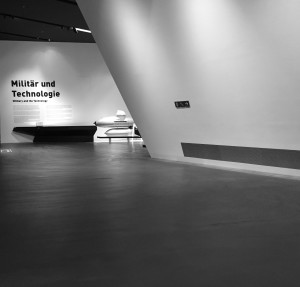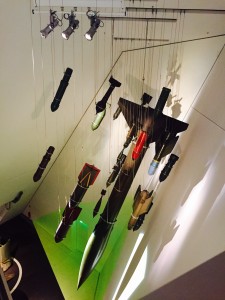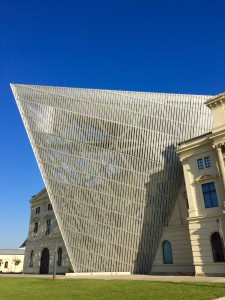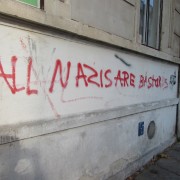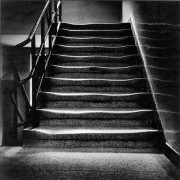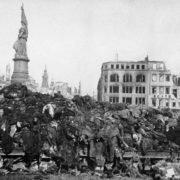The Creation of a National Identity through Militarization
By Monica Pellerano
Military Museums have so often been nothing more than spaces dedicated to the demonstration of armament and capacity, that the Militär Historisches Museum in Dresden, Germany will forever remain in my memories as a singular attempt at the recognition and honest treatment of a past many would prefer to forget. This exposition, which I expected to be a simple exposition of guns and tanks, proved me so incredibly wrong. And more than an observation of the past, the museum seemed to me a warning of things to come.
Militarism has been traditionally understood as the defense or promotion of national interests through the employment of military capabilities. Here, it is important to encourage the idea that not only is militarism used for the defense and promotion of these national interests, but is also conducive to the creation of the nation whom then fabricates these interests in the first place.
The role of militarism in the unification of the German people is not just an ideological force. Under the leadership of Otto Von Bismarck, Germany saw its borders stitched together because of the military’s victory in fighting for this fusion. Military prowess has, therein, already taken on the role of the nation’s unifying force and it should not seem too peculiar that militarism would then take on the role of a guiding principle towards the creation of nationalist sentiments as well.
Such is the case with the creation, and subsequent promotion, of the state of Germany as the ‘Third Reich’. The coming together of the German people under the fabricated disregard for Jews has often taken center stage in the academic discussions of the formation of the national identity of Nazi Germany. This focus on the fabrication of this ‘other’, has very often left little space for discussion of another venue for this construction of nationalistic sentiments, which has been significant not only in its application to the case of the Third Reich, but as well in the historical resilience of its successful application: militarism.
The narrative of “Undefeated in the Field”, arrived upon especially in reference to the glorification of the German role in WWI, was made to call to mind Germany’s invasion of both Belgium and Luxembourg, as well as its successful halting of the Russian Army’s invasion of East Prussia. ‘Details’ such as the fact that Germany was later defeated in 1918, and that the German Empire was subsequently divided amongst the war’s victors, were conveniently downplayed and referred to as injustices, which necessitated correcting. During the Nazi Era films legitimizing these narratives were commissioned, and those which deviated from this narrative of glory were not only marginalized, but were eventually banned in 1933, ultimately swept under the rug of exaltation of war. Images of combat, and moreso, of victory in warfare, began to be widely consumed by the people as embodiments of the self-confidence and the strength of the nation. Service in the military was thence professed as the highest degree of selflessness, of sacrifice, one could effect. It became a service of honor.
Not only was the discipline of the arts dominated by this narrative, but national culture became entrenched in it: there was a simultaneous normalization and celebration of war through the display of uniforms, military rituals, and military marches. Academic and social education became saturated with this theme of the glorification of war. People who seemed, convinced by this narrative had very loud voices, drowning out the sounds of opposition.
But opposition did exist. The dissidents to these attempts at militarization, however, were efficiently and mercilessly overcome. In efforts at self-preservation, the remaining populace often suppressed the memory of these instances of rebellion and accepted the Nazi regime out of fear or resignation, notwithstanding those who, in quite numerous cases, acted out a sense of opportunism.
It is these same opportunists that I have learned to fear the most. It is these types of individuals that the museum seems to warn us against. The success of these horribly extremist instances of ideologies are made possible not solely by the inciters to action, but to a large extent, by these opportunists, people who can so easily be swayed for the sake of convenience. They are not driven by external coercion nor thoughtlessness, but by active consideration, and an almost religious subservience to the securing of their wellbeing at the expense of their humanity.
It is these people who contribute to the contemporary world’s return to violent politics and to violent transitions. That in fanatically regarding their own stance in the world, so easily disregarding that of others, they can so straightforwardly justify and exercise depravity for the sake of ‘freedom’. It is both curious and terrifying to observe how quickly these national narratives of violence are recreated in a world that likes to call itself modern and progressive. I recognize that there is value in recognizing that military histories will never remain just in history, but there must be an overcoming of this pattern of creating identity through armament, lest we become ‘nations of war’ rather than ‘nations at war’.

